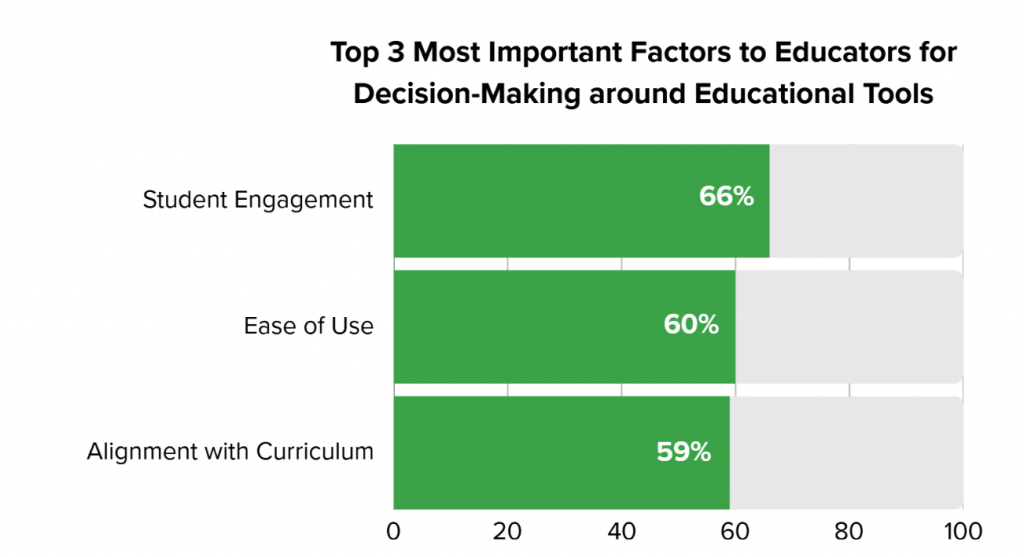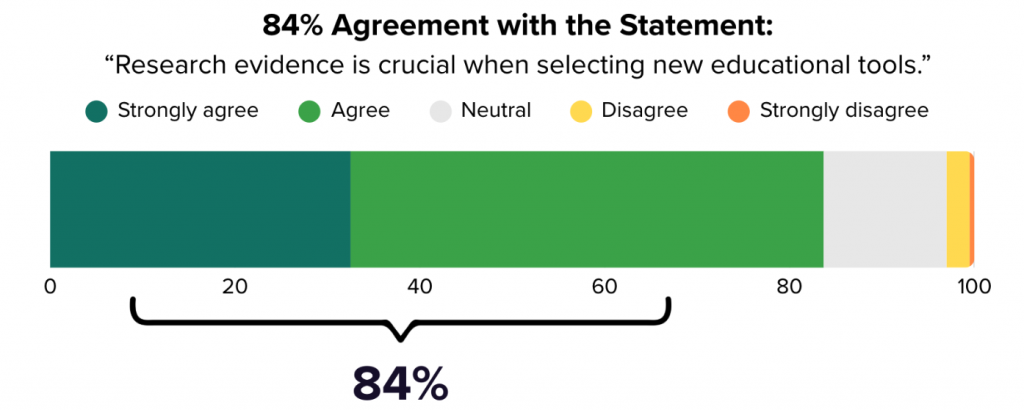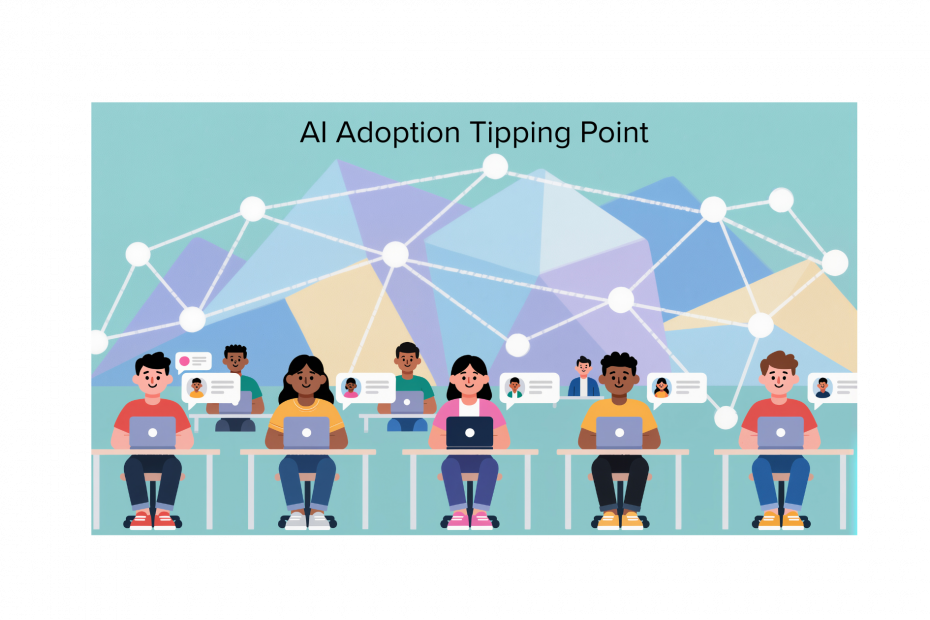In today’s rapidly evolving educational landscape, artificial intelligence has emerged as a transformative force. A recent study conducted by LXD Research with over 200 educators across 37 states reveals how educators across the country are navigating this technological shift. The key insight for us? Research itself becomes the most powerful form of social proof when it demonstrates success in contexts educators recognize as similar to their own. Educators don’t inherently distrust research; they distrust research disconnected from their reality. When studies feature teachers, schools, and students like theirs, research transforms into the ultimate peer validation.
For both educational leaders and EdTech companies, this insight suggests prioritizing diverse, authentic research portfolios over single large-scale studies in controlled environments. As educational systems navigate AI integration, success will be measured not by technological sophistication but by impact on student engagement, learning outcomes, and equity—achieved through practical implementation that addresses educator concerns while maintaining rigorous independent validation.
AI Adoption Reaches Critical Mass
The numbers tell a clear story: AI has reached a tipping point in education, with 54% of educators currently using AI tools and 77% likely to adopt AI tools in the next two years.
These adoption rates show significant variation along generational lines, with younger educators demonstrating much higher comfort levels with AI technology. Gen Z educators are three times more likely to report that AI has enhanced rather than harmed classroom engagement, suggesting that as the teaching workforce evolves, student access to AI-powered materials will likely increase substantially.
Despite growing adoption, the lack of training for AI is a significant barrier that limits AI’s educational impact. Nearly 58% of K-12 teachers have yet to receive any training on artificial intelligence, even two years after the introduction of ChatGPT. This training gap undermines equitable access to AI’s benefits and creates risks around inappropriate or ineffective implementation.
Student Engagement Leads Decision-Making
The most striking finding centers around what educators value most when evaluating AI-powered educational tools. Student engagement topped the list of evaluation criteria, with 66% of respondents identifying it as “extremely important” in their decision-making process for general educational tools, and 55% maintaining this priority specifically for AI tools.
This emphasis on engagement reflects educators’ recognition that AI’s greatest educational value may lie not in administrative efficiency or curricular coverage, but in its capacity to motivate and involve students in their learning.

Pilots Are Action Research Studies
When it comes to validating AI tools, practical experience takes precedence. Over 80% of educators consider pilots critical for decision-making, with 40% selecting free trials as their single most important proof point. This helps us understand that “action research” conducted with their own teachers and students is the most meaningful, outweighing formal research studies, peer recommendations, and cost considerations. This hands-on approach reflects educators’ desire to see tools work in their specific contexts before committing to full implementation. Offering a third-party consultation with an experienced LXD Researcher could be a low-cost way to help measure the impact of these often short trial experiences.
Privacy and Ethics Now Top Barriers
Perhaps the most significant shift in educator priorities involves the primary barriers to AI adoption. Ethical concerns (54%) and data privacy risks (53%) now surpass cost (35%) as the top barriers, representing a fundamental shift in what educators worry about most when considering AI tools. This reflects growing awareness of the complex implications of AI technologies beyond their instructional capabilities.
The Research Paradox
Our study revealed an interesting tension between educators’ stated values and their decision-making processes. While 84% agree that research evidence is crucial for tool selection, 69% indicate that peer recommendations ultimately carry more influence than formal studies.

This apparent preference for peer recommendations over formal research studies may reflect other issues: most educators assume research is esoteric, removed from real teaching scenarios, and conducted in settings that don’t look like theirs.
Yet, 75% of educators trust educational tools more when they are scientifically validated, highlighting the importance of scientific validation in building credibility.
“Other professional fields use research to guide their work and the tools that they use. So, of course, we should be doing that with educational tools…we shouldn’t be implementing anything without [research] being part of it.” – Elementary school teacher
The Trust Gap Varies by Tool Type
Educators expressed differentiated levels of trust in AI applications depending on their educational purpose, revealing a sophisticated understanding of AI’s appropriate roles. This pattern suggests that educators view AI as most suitable for supporting and reinforcing learning that has already occurred, rather than for delivering primary instruction. The comfort with AI-powered practice tools likely reflects their similarity to traditional drill-and-practice software, enhanced with adaptive capabilities.

Moving Forward: Research-Informed Implementation
For educational leaders looking to implement AI technologies effectively, our findings suggest several key considerations:
- Prioritize student engagement: Focus on tools that genuinely enhance student involvement and motivation.
- Facilitate meaningful pilots: Create structured opportunities for educators to test tools in their specific contexts.
- Bridge the research-practice gap: Develop accessible summaries of research findings and implementation guides that connect research to classroom realities.
- Address privacy and ethical concerns: Establish clear guidelines for evaluating AI tools with attention to data privacy, ethics, and equity.
- Invest in teacher training: Provide comprehensive professional development focused on effective AI implementation.
As AI continues to shape educational practices, success will depend on thoughtful integration guided by educator insights, student needs, and rigorous evidence. The path forward requires balancing innovation with responsible implementation to ensure these powerful tools enhance rather than undermine educational goals.
Sign up for our
